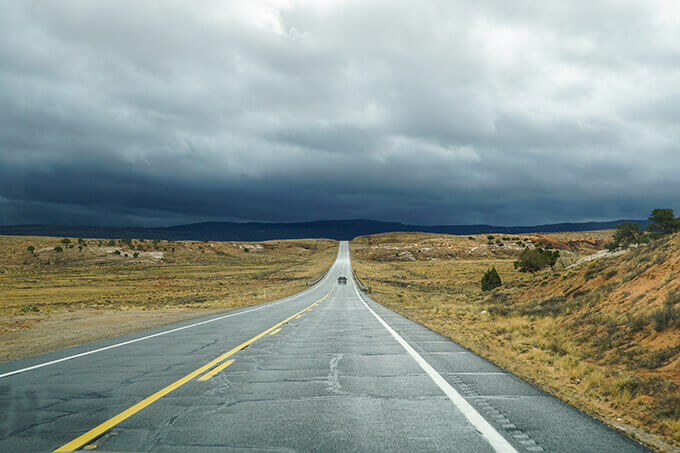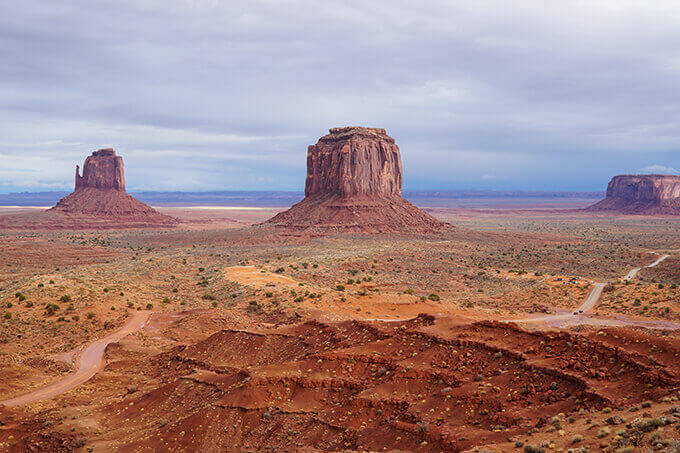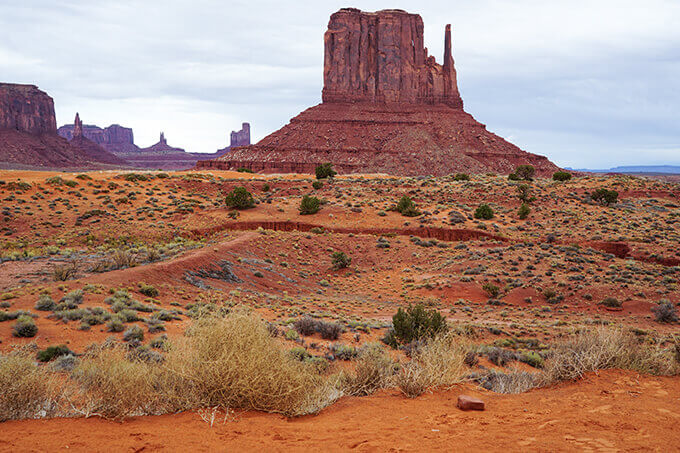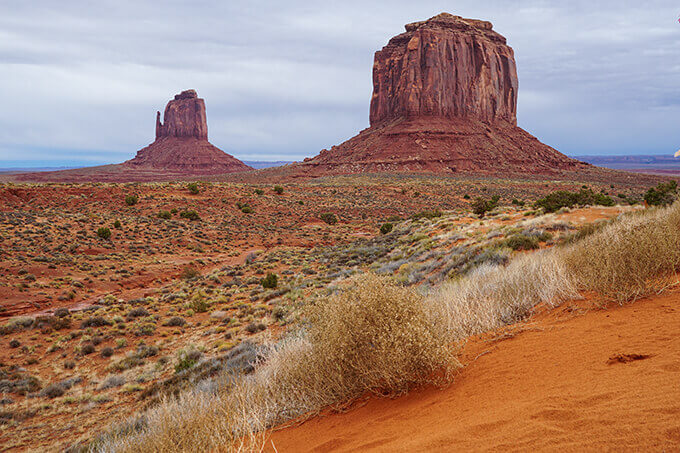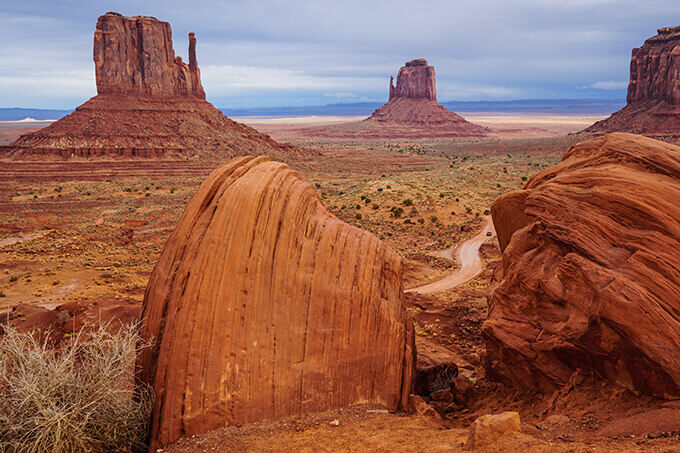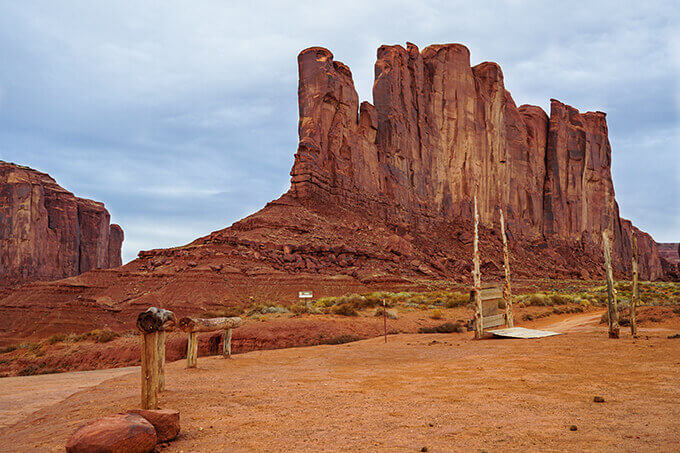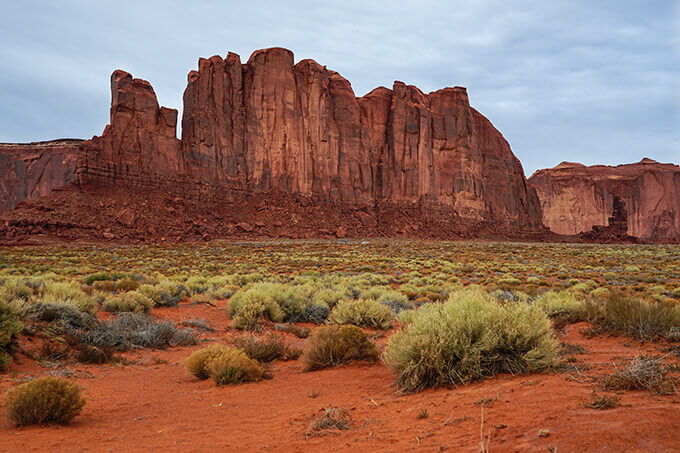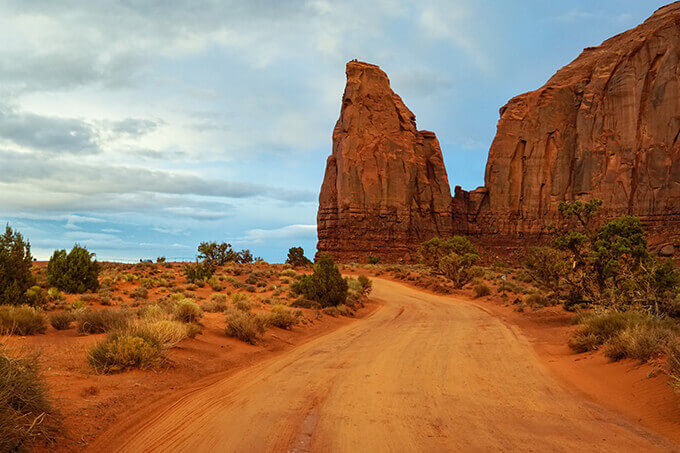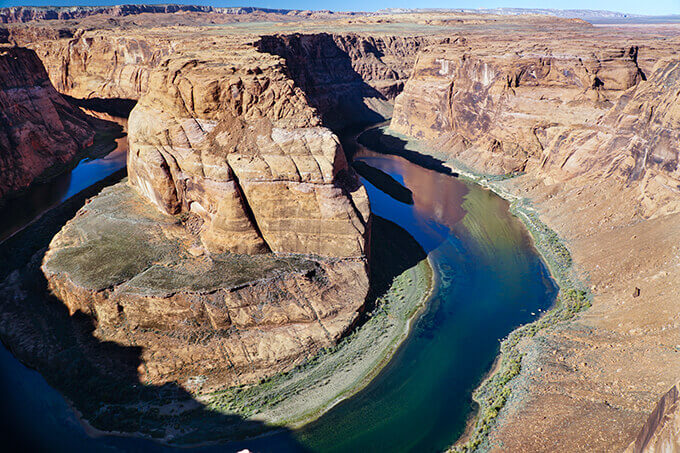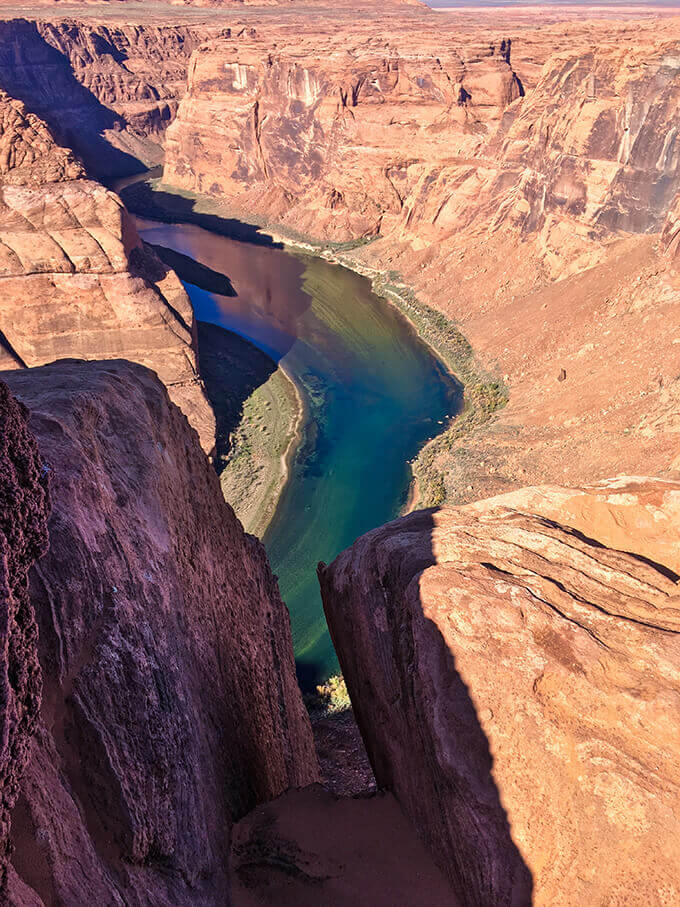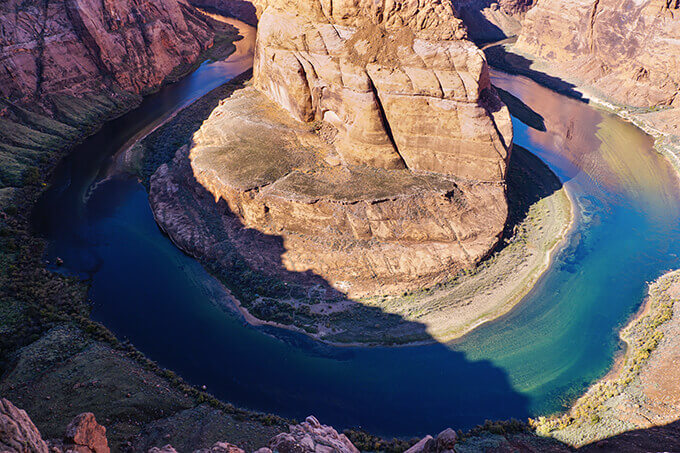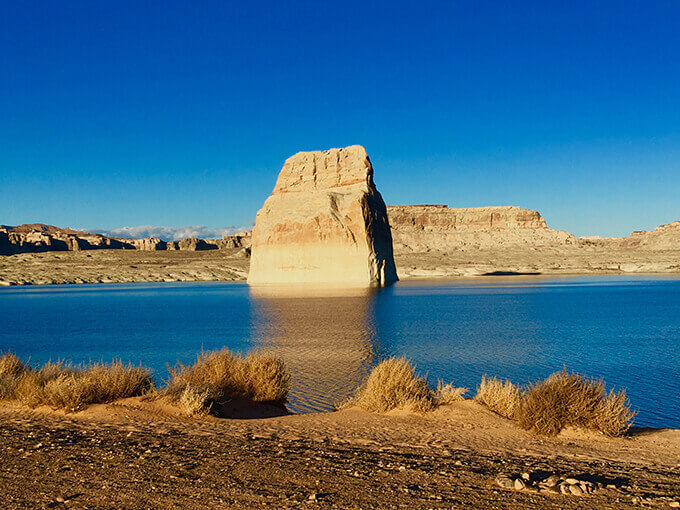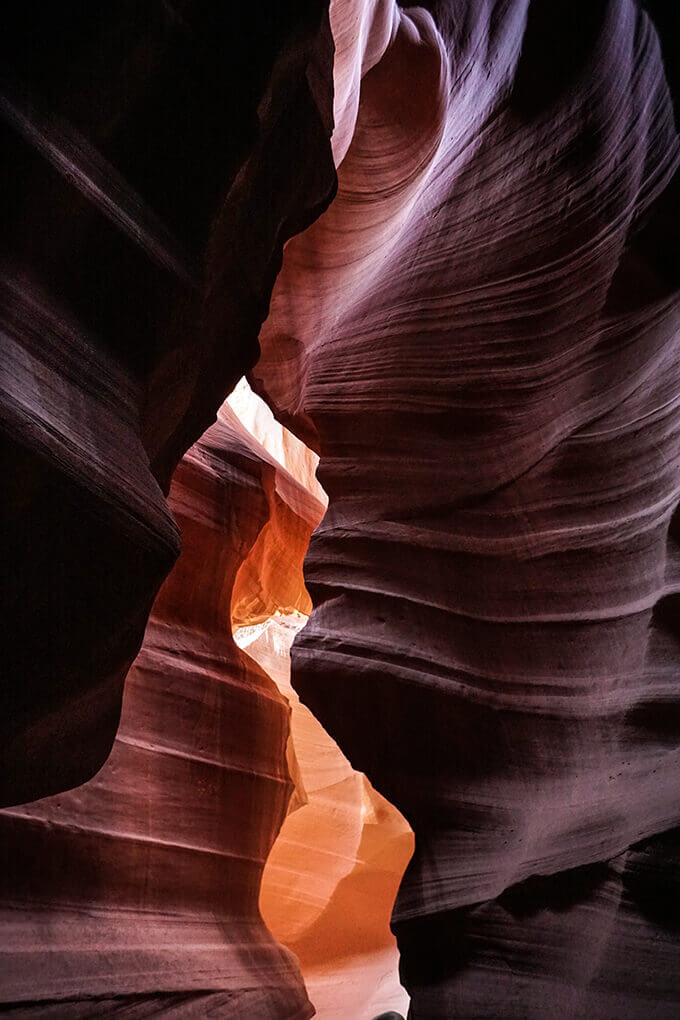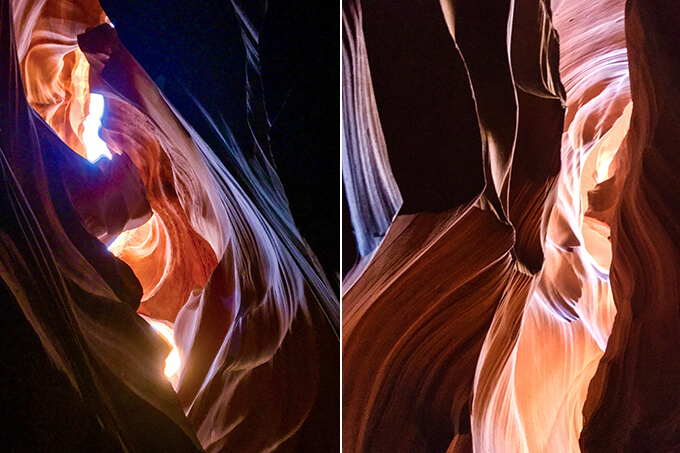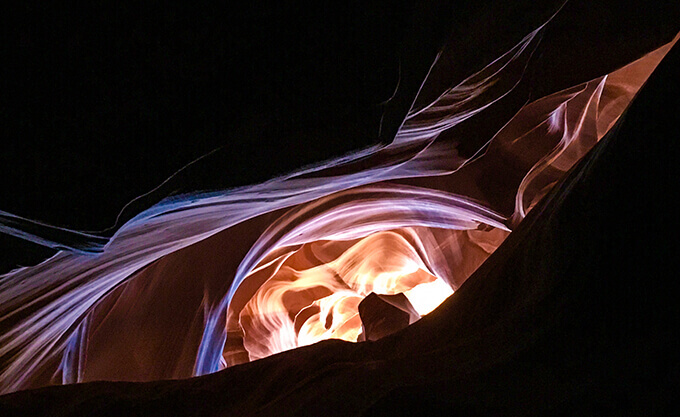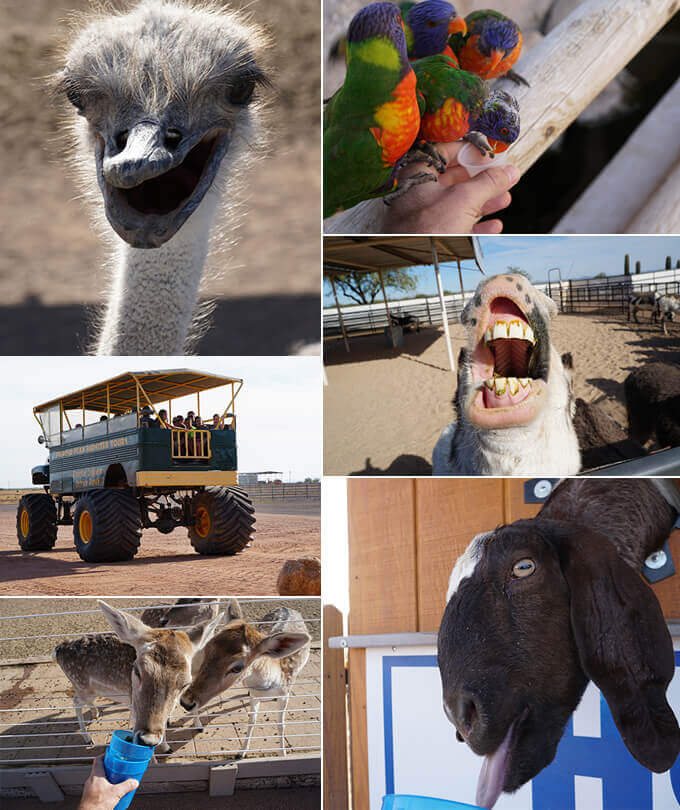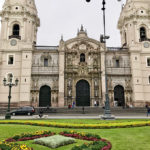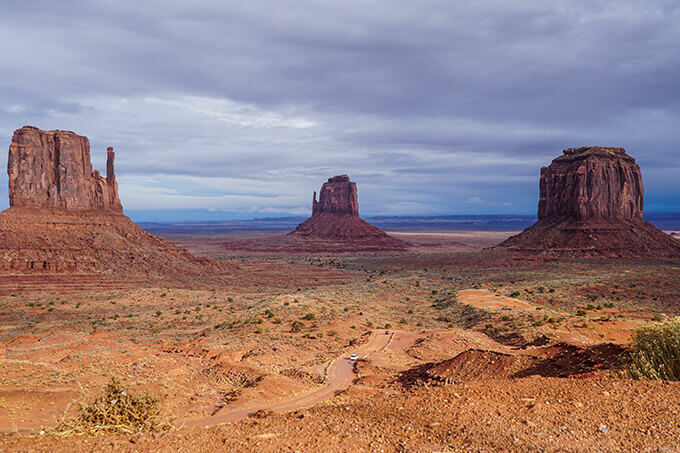
Along the border of Arizona and Utah, lies probably the biggest concentration of natural wonders in the U.S. There, mother nature has sculpted some of the most unique and otherworldly geological formations, and stunning landscapes that I’ve seen. Starting with Grand Canyon, Zion National Park, Bryce Canyon, then west to Coyote Buttes and The Wave, Antelope canyon, Lake Powell, Rainbow Bridge and Monument valley…and the list goes on, there’s so much to see, and experience that it’s almost impossible to take it all in, at one pass. Conveniently, all these landmarks are within a reasonable distance within each other, so if you have plenty of time, this makes for the perfect 10-to-15-day road trip itinerary ever!
Alas, we didn’t have the luxury of time, and with only 3 days on the calendar, we did our best to cover as much as we could – which is to say, we just got a small taste of the grandeur and stark beauty this place possesses. Apart from time, we also didn’t have weather on our side, as it was end of November, but despite the short time and rainy weather, we still managed to see some amazing, unforgettable sights.
We chose Page, AZ as our base camp – a small town, ideally situated close to many of the landmarks we wanted to visit. For such an important, central location, one would expect a cute little touristy town. But Page is a very unassuming and humdrum place, and as it turns out it has only been around for 60 years (so not much of a cultural or historical heritage there). It actually formed in the 1960s, when the construction of the impressive Glen Canyon Dam and bridge began, which brought over workers and their families to the spot, and over time grew into a town.
The Glen Canyon bridge happens to be the third highest arch bridge in the US, crossing the Colorado river 700 feet above. The view from the bridge is spectacular – on one side is the sprawling lake Powell, and the massive Glen Canyon Dam wall, which they say, is as large as its more famous counterpart, Hoover Dam, and on the other – the Colorado river, way down there, meandering through the steep red canyon walls. On the day we first passed through the bridge, it was raining heavily, and there was an impromptu but quite voluminous waterfall, that tumbled down from the top of the cliffs (see the bottom right picture in the collage above). It was gone by the time we visited again two days later!
There is a visitor center right there, on the bridge, and they offer tours of the dam, which seemed quite interesting, but due to lack of time, we had to skip that one.
Day 1: Monument Valley
Our first destination was Monument Valley, 120 miles west of Page. Monument Valley is a Navajo-owned tribal park, situated on the Arizona-Utah border, and featuring the most iconic landscapes of the Wild West. Its scenery surely looked familiar, as lots of Westerns and overall 35 major motion pictures were filmed among its red sandstone buttes and monoliths (including a scene from Forest Gump).
It has been raining non-stop the day before, and it was still raining as we were leaving, but there was a slim 30% chance the rain would stop temporarily in the afternoon. With no high hopes, but resigned none the less (our only other option being locked in a hotel room) we left for Monument Valley some time in the late morning. The drive was tedious and slower than usual, and there were no other places of interest along the way to stop or look at. If you need to eat, or use a bathroom, think beforehand! This is the wild west – one of the most sparsely populated areas with hundreds of miles of nothing but an endless barren dessert. The only humanly inhabited place we saw was Kayenta, a Navajo Indian village, about 20 miles east of Monument Valley, where we stopped to grab a quick lunch.
As it turned out, the rain did take a break in the afternoon, and the timing couldn’t have been more perfect. Just as we were approaching the valley, as if on cue, it cleared a bit, and graciously allowed us a couple of hours to explore, before it resumed again just after dusk, as we were about to leave. We were lucky to also get those beautiful, dramatic skies, that were the perfect backdrop to the bright red rocky formations, jotting up out of nowhere, it seemed, on an otherwise flat terrain.
It’s hard to describe the valley, and even pictures cannot properly convey the sheer magnitude of the place – the contrast between the vast desert land that stretches beyond the horizon, occasionally disrupted by the bizarre monolithic spires, and buttes, rising vertically up to 1000 feet, and looking like they don’t belong there, is just breathtaking.
There is a 17-mile dirt road that meanders throughout the park, and you can stop and take pictures and marvel at the views. Here and there, you can see Navajo Indians, selling their silver art and jewelry, which makes for a great souvenir. Given more time, you can get a narrative tour, that takes you to places only authorized tour guides can access.
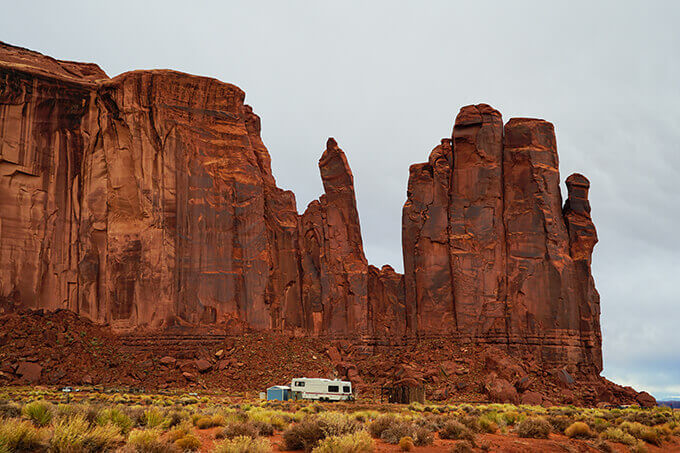
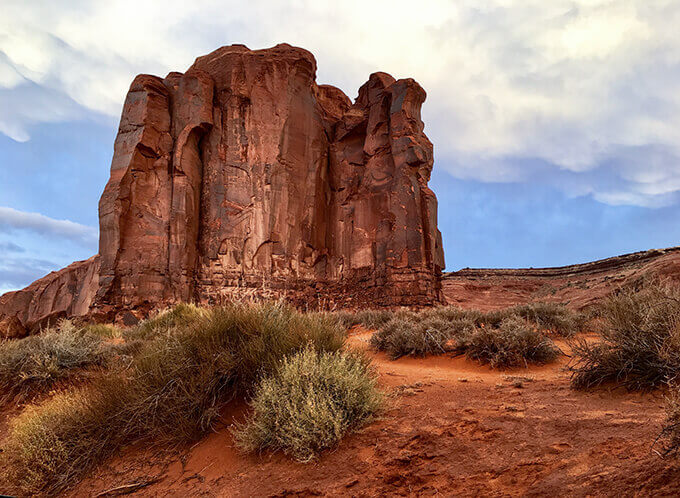
In an ideal scenario, I would’ve spent at least a day in the park, taking in the views and experiencing its beauty slowly. I would have walked, or ridden a horse, rather than driven a car all the time. I would have loved to see the park at sunrise and sunset, and spend the night in a tent, surrounded by nature. Under the circumstances though, I was grateful that I saw even a glimpse of it.
If you plan to spend the night in the park, check out The View Hotel, which offers both hotel rooms and campground.
Day 2: Horseshoe Bend & Lake Powell
Our initial plan was to spend a whole day exploring Lake Powell by boat. It’s a 6-hour boat ride, that takes you all the way to Rainbow Bridge – the tallest natural bridge in the world (the only way to access it is by boat, or alternatively via a 14-mile hike). Lake Powell, the second-largest man-made lake in the U.S. is no less spectacular – with its vein-like channels spanning almost 2000 miles of shoreline, its bright red naked rocks, and turquoise water – it’s mesmerizing. However, it was winter and there wasn’t a boat ride scheduled for that day. Alas, we had to leave Lake Powell, and Rainbow Bridge for another trip, and instead we had a whole day to check out Horseshoe bend, near the eastern side of Grand Canyon.
It’s situated right outside Page, and it’s a must see. A short walk from the parking lot leads to a stunning, almost 360 degree curve, that the Colorado river makes in the canyon, around a solitary rock (hence the name), and we spent a great hour or so, marveling at this natural masterpiece.
We did a little hiking and exploring the afternoon in the outskirts of Page, among the wavy rock formations just above Glen Canyon Dam, which the locals refer to as ‘The New Wave’ and managed to get to Lake Powell west end, just in time to catch the sunset at Lone Rock Beach.
Day 3: Antelope Canyon
They say, this is the most photographed slot canyon in the world. We’ve been eyeing pictures of this canyon, and dreaming of going there and photographing our hearts out, for as long as I remember. It’s always been at the top of our bucket list, and finally, finally we got there.
There are actually two canyons – The Upper Canyon, which is the more popular, and the Lower Canyon – harder to access, and less touristy. We visited the Upper Antelope Canyon, which despite being the middle of winter, was quite packed, and the only available tour spot we could book was at 8 am. This is not the ideal time to visit the slot canyons, as the sun, especially the winter sun, is very low in the sky still. The canyon is very narrow and tall, so light can hardly filter in at some spots. The best time is around noon when the light pours in and creates those famous light beams that we’ve seen so often on pictures.
I should also mention, that the canyon is on Navajo land, so you cannot go in by yourself whenever you choose to. You need to take a guided tour, which I felt was very touristy and rushed. If you want piece and quiet to photograph the place properly without someone showing up in your frame every time you point your camera, you should consider the photographic tour. Or even better, as suggested by some, a visit to the Lower Antelope canyon, which is not as crowded. That being said, the beauty of the place is stunning. The layers upon layers of red sand stone walls and crevices create some truly magical colors and geometric shapes, and they literally explode in all shades of orange, and gold as the sun comes up.
We must definitely go back!
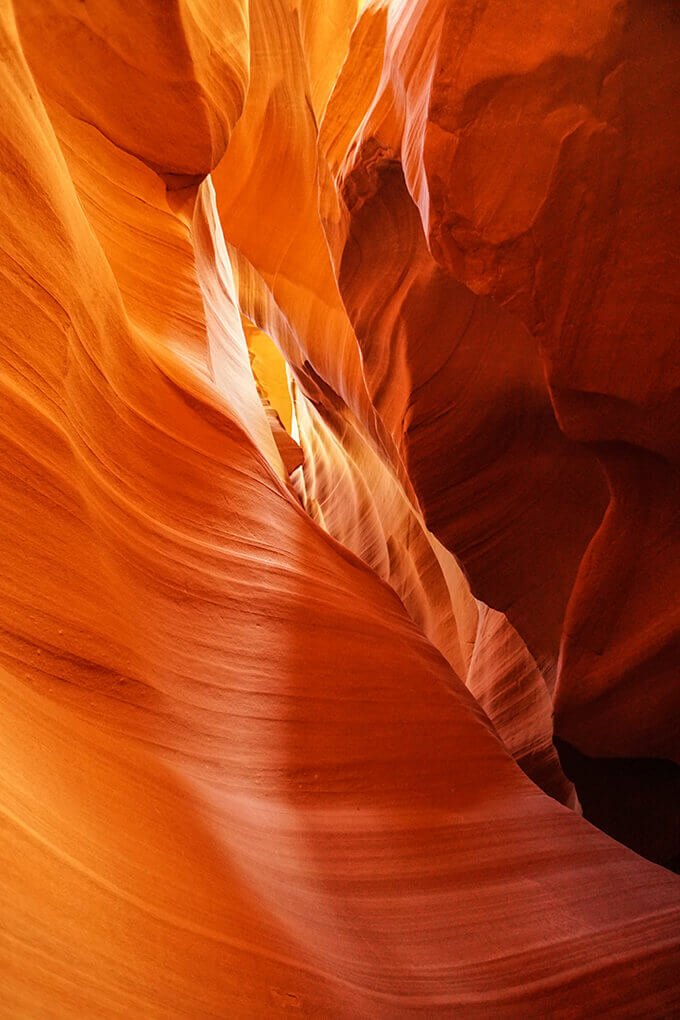

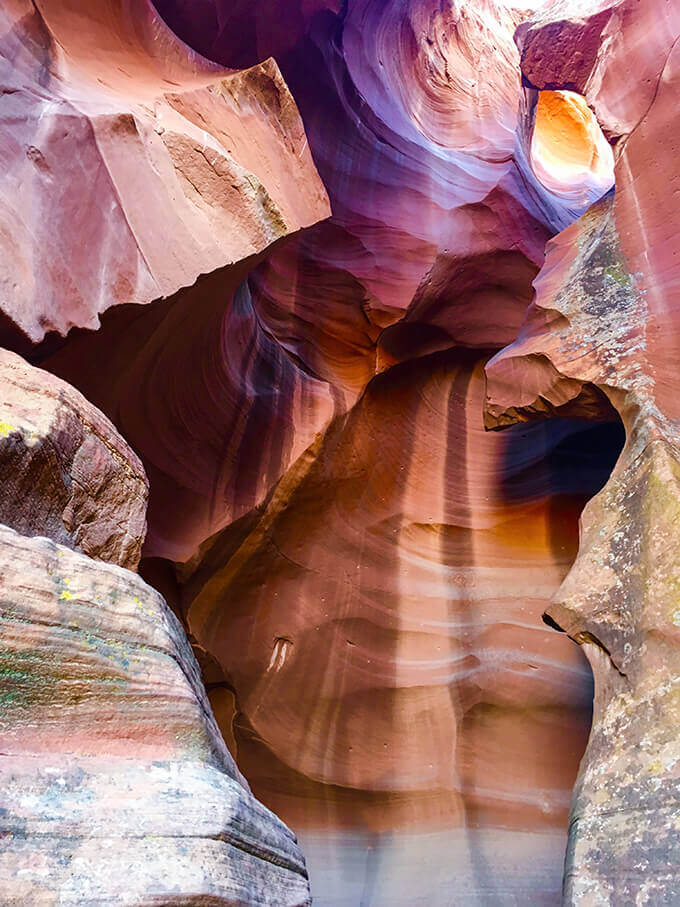
We returned to Phoenix where we spent Thanksgiving with family, before we headed back home to California. If you are traveling from Page to Phoenix, definitely stop at Sedona. It’s such a great quaint town, full of art galleries, and cafes, nestles between gorgeous shockingly red rocks, and plateaus, and it’s a great way to break the 4-hour drive.
That would pretty much conclude our trip, except that in the last day of our stay in Arizona, we decided to visit an ostrich farm, about an hour south of Phoenix. It’s definitely worth mentioning here, as it was such a fun day trip, and if you are in the area, and especially if you have kids, you should give it a go.
Rooster Cogburn Ostrich Ranch
Rooster Cogburn Ostrich ranch is so much more than an ostrich farm – it feels like a small zoo, that allows you to get close and personal with all animals. Upon entering the farm, you get a box of various food pallets, that you can feed to each animal.
We had some good laughs with the miniature Sicilian donkeys, who showed us their flashy smiles, and the funny gang of boar goats, with their long beards, hanging out of the holes in the wall, or the ducks who stick their beak in your fist with a jerky motion, trying to grab that little nugget of food. Our favorite were probably the lorikeets who perch on your head and arms in flocks, and peck at the food like there’s no tomorrow, or maybe the super friendly stingrays who actually come and eat from your hand.
Of all the animals in the ostrich farm, the ostriches were probably the least favorite. They are huge dummies (their brain is actually smaller than their eye :)) and they are kind of hostile, so you gotta be careful around them. You can feed them by a method of ‘ostrich fishing’ where you dangle a piece of food in a improvised rod, and sway it above their heads. You can do this only if you take the Monster truck tour, which by the way, is very informative and fun for all ages. During the 45-minute ride, you get to learn a lot about these funny birds.
My only piece of advise – take food with you, as there is no food in, or near the ranch.
So, for my next trip to Arizona/Utah, I have a long bucket list. I would definitely make that in the late spring or summer, and it must be at least 10 days long. Here are my top 10 attractions to visit next time, starting my itinerary from Las Vegas, and going east towards Arizona and Utah:
Top 10 places to visit in Arizona & Utah:
- Valley of fire state park
- Zion National Park
- Bryce canyon
- Coral Pink sand dunes state park, UT
- The Wave @ Coyote buttes (worth a try even though entrance is determined by lottery)
- Lower Antelope Canyon
- Lake Powell and Rainbow Bridge
- Monument Valley (redo)
- Trail of the Ancients to Natural Bridges National Monument
- Grand Canyon (south rim)

